Cullen Rifles History
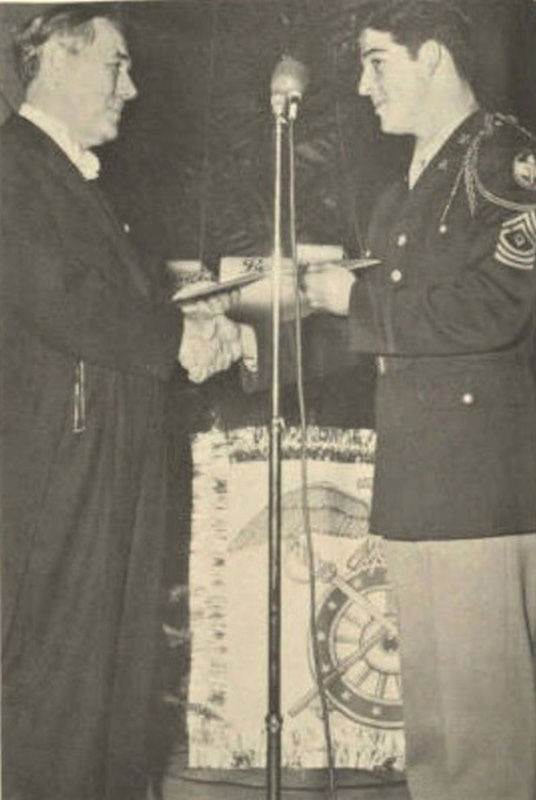 Hugh Roy Cullen and Jack Harper – First Commander of the Cullen Rifles 1949
Hugh Roy Cullen and Jack Harper – First Commander of the Cullen Rifles 1949The Houston Corps of Cadets and the Cullen Rifles were both established in 1948. Created as one of many extracurricular activities offered to the members of the Houston Corps of Cadets, the Cullen Rifles were named after university benefactor Hugh Roy Cullen in recognition of his $88 million in donations. The Rifles were “equipped with silver helmets and chrome-plated 1903 Springfield rifles” with which they proudly marched in various “parades and special events.” These events included home football games, Armistice Day and Mardi Gras parades, and whatever else the university Chancellor, Mayor, or President of the United States asked them to do in Houston.
The Rifles enjoyed accolades and recognition from the city and the student community. Starting from their inception through the 1950s, the Houstonian yearbook constantly featured the Rifles, showering them with flattering phrases depicting them as a “crack drill team well known to Houstonians.” The 1951 Houstonian described the Rifles as already enjoying the distinction of being “one of the most outstanding marching units in the Southwest,” just three years after its founding. According to former Cullen Rifle, William “Bill” Taylor, one would have been hard-pressed at the time to find anyone on campus that “didn’t know the Cullen Rifles.”
Aside from its competitive successes, the Rifles’s campus fame can be attributed to a few special cosmetic features. Their distinctive chrome helmets made them easily recognizable at special events and drill ceremonies. On campus, through the 1950s, Cullen Rifles members typically dressed like their counterparts in the Houston Corps of Cadets with a few unique characteristics. According to Taylor, during the summer and fall, their uniform consisted of a military top, khaki pants with a red stripe down the side, of their “bloused pants,” and “straight military dress shoes with the… leggings.” In the winter, they wore the “pinks and greens”, which was then the standard officer’s Army uniform.” While all cadets wore the UH insignia on the left sleeve of their uniform, the right side of the Rifles’s uniform featured a cougar’s head emblazoned on a shield, setting them apart. They also wore a distinctive cord, “which was red in the khaki uniform and white in the winter uniform.”
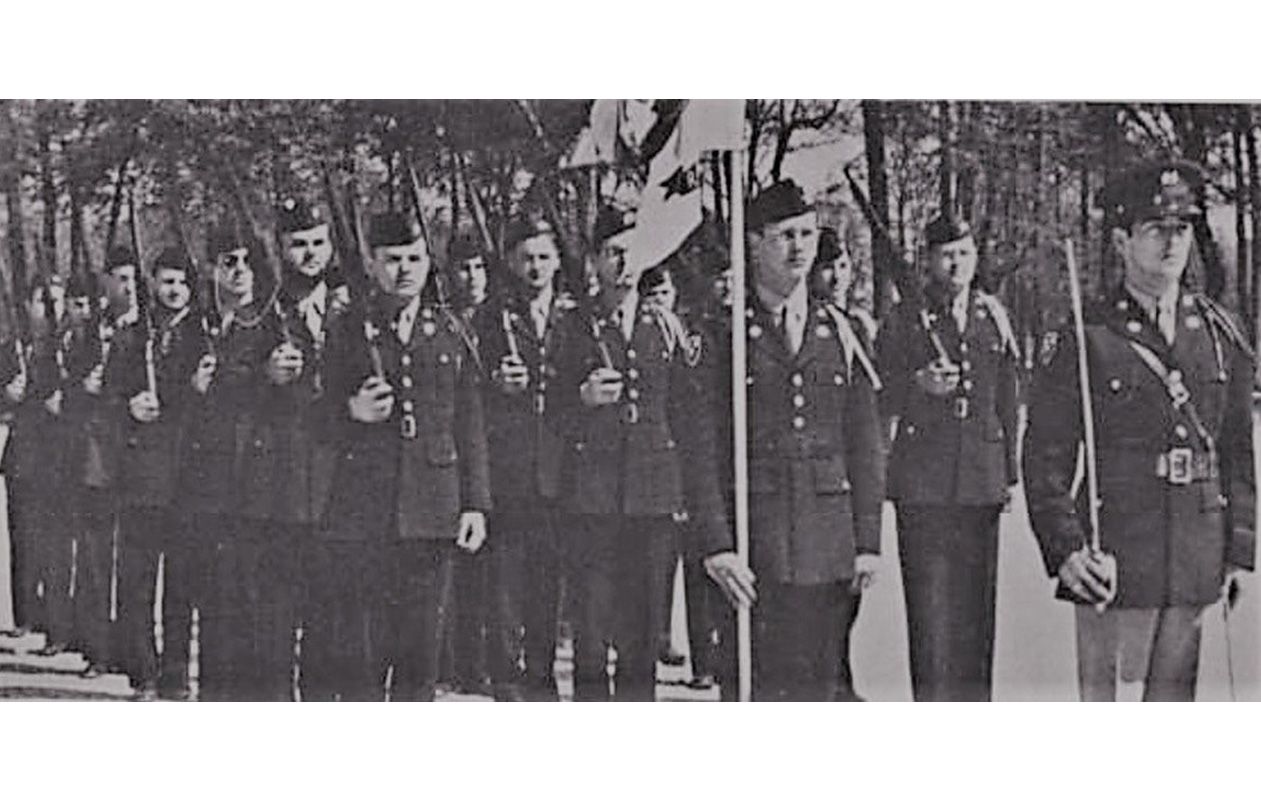 The original Cullen Rifles – 1948-1949
The original Cullen Rifles – 1948-1949Aside from the uniform, Rifle members were like any other ROTC cadet. Taylor recalls that in the early- to mid-1950s, physical training was not a mandatory morning activity in a cadet’s life, as one might assume of a military unit, because the cadets were expected to stay in shape on their own. Instead, the cadets and the Rifles began their mornings like any other student— going to classes with freedom in between to do as they pleased. By virtue of being a part of the Rifles, though, they had an activity added to their agenda. “Every morning at seven o’clock,” the Rifles met to rehearse their drills and maneuvers for upcoming events. These rehearsals proved essential to refining rifle handling skills into an art form. One particular maneuver they performed, explained by Taylor, was the “Queen Anne’s Drill.” Performed with the standard Cullen Rifle platoon formation—three squads deep, with ten men in each squad—the maneuver required the platoon to line up on a football field, from one thirty-yard line to the next, and perform “various manual arms movements,” one after another, creating a ripple effect. After this, they performed the “Queen Anne’s Salute,” which began at the position of “Right Shoulder, Arms” and then featured each Rifle flipping his weapon off his shoulder. The Rifles assumed a kneeling position, with their heads bowed down and the rifle planted into the ground beside them at a forty-five-degree angle. This formation was followed by the “Five Sixes to the Wind” in which the platoon split the unit in half and marched off in opposite directions— “one would go to one side of the field, one to the other side of the field.” The units divided even further into their squad formations and then broke off in four different directions. The Rifles did maneuvers in their split formations and then reassembled as one platoon.
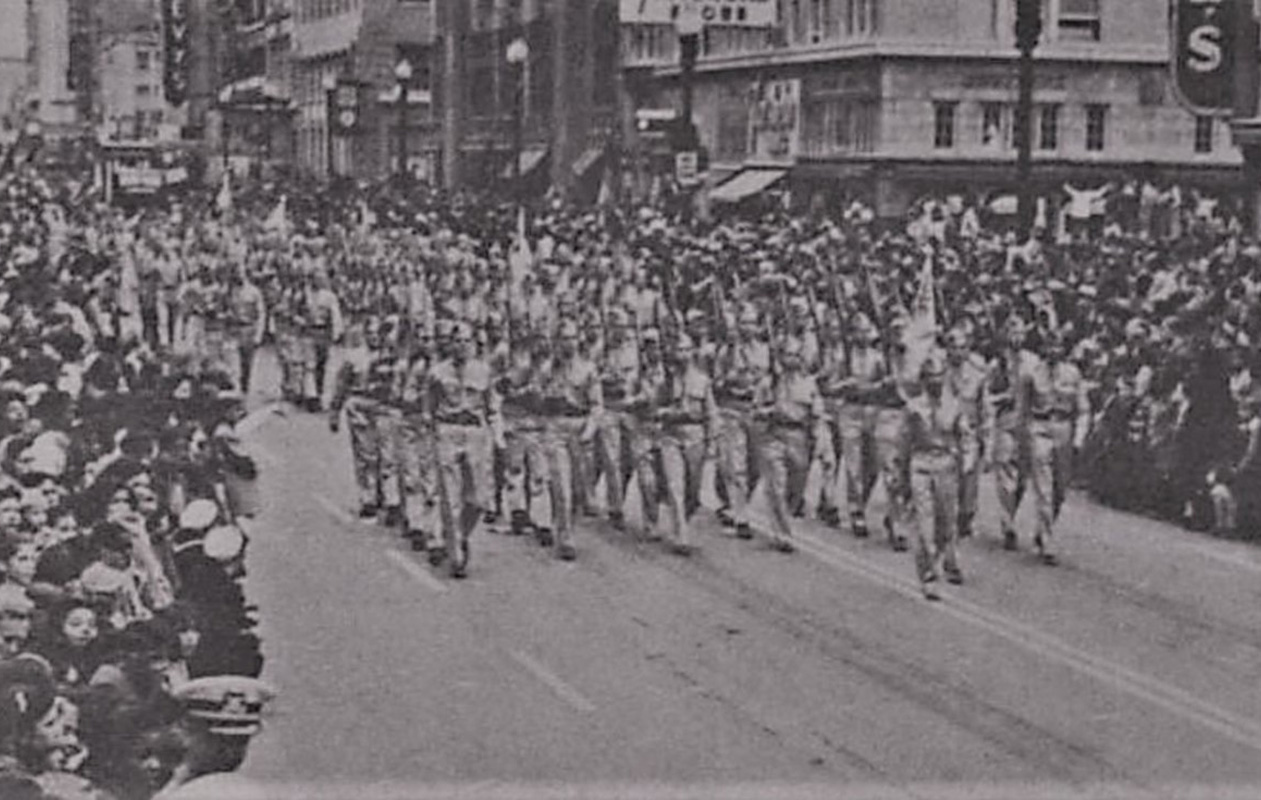 1948 Armistice Day Parade
1948 Armistice Day ParadeThe Rifles performed these drills at Houston Cougar football games and numerous local events such as the Houston Livestock Show and Rodeo, or anywhere their presence was requested. Their dedication to their craft enabled them to win awards, beating teams within their conference, including the Ross Volunteers of Texas A&M. As Taylor noted with unsuppressed glee, the Rifles excelled at beating Texas A&M’s rival drill team, the Aggies’ Fish drill team in particular, who the Rifles reportedly “beat… like a drum pretty regularly.” While their rifle drill maneuvers were far from traditional marching, the Rifles did march in major parades. They participated in the annual Mardi Gras Parade in New Orleans and the local Armistice Day and, later, Veterans Day parades, in addition to receiving invitations to participate in parades in cities across the nation. The Rifles’s greatest distinction, however, was serving as the Honor Guard for President Dwight D. Eisenhower during his presidential visits to Houston. The Rifles did not serve solely as a color guard and escort because at that time, “there were virtually no Secret Service agents,” according to Taylor “It was literally just [the Rifles]” protecting the President of the United States, who came to Houston for some matter of business and was often found speaking with Hugh Roy Cullen and other influential businessmen. The Rifles followed President Eisenhower from his arrival in Houston to his departure and were privileged to stand by his side during campaign stops or whatever galas the president attended. The Rifles moved in high circles, and the future looked bright. Having enjoyed fame in its early years, the Rifles experienced an unexpected decline in popularity and coverage in the 1960s followed by rebranding. The decline began with the 1960 Houstonian. Just like years past, ROTC received a multi-page spread chronicling the various company member, but the Cullen Rifles were nowhere to be found. From there, the blackout spread. Rather than including panoramic photos of the companies, the regimental band with the Rifles, and the military ball, the 1965 yearbook allotted only three pages to ROTC. While the reason for the decline in coverage is unclear, it might have been due to the growing counterculture movement and anti-military sentiments of the times.
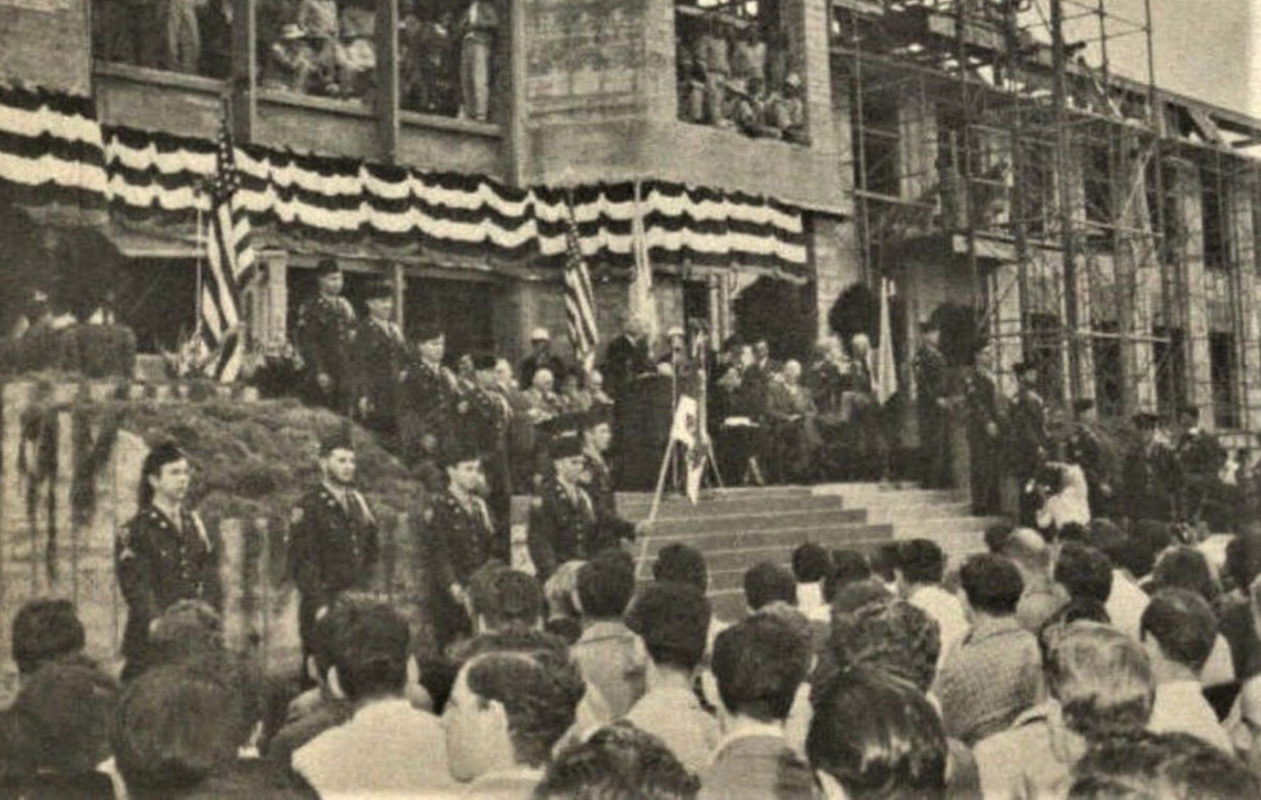 Cullen Rifles flank the stage at E Cullen dedication March 16 1949
Cullen Rifles flank the stage at E Cullen dedication March 16 1949Even though ROTC had less coverage in the yearbook, the program and the Rifles continued to thrive as evidenced by photographs depicting cadets in full regalia marching in parades and the continued practice of the Final Review, which can only be held by larger units. Eventually, ROTC’s competitive rifle marksmanship team and civilians from the UH varsity rifle team became associated with the Cullen Rifles name in the Houstonian. The drill team was not mentioned. This rebranding allowed the precision-based drill team to branch out as a national top-tier rifle team, however, the Rifles still lacked the media recognition they previously received, culminating with the loss of the “Cullen Rifles” name. The Houstonian referred to them generically as the “rifle team” or the “University of Houston rifle team.” Nevertheless, the Rifles won first place at the NRA International meet in 1965 and the 4th Army Southeastern Conference in 1966. As the UH varsity rifle team, members of the Rifles finished the 1966 season with ten first place victories and two second place victories resulting in a win at the Southwest Rifle Association championship. That same year, Cadet Jesse Reynolds became “UH’s first All-American marksman.”
The 1967 Houstonian officially dropped the “Cullen” name from the Rifles and Houston ROTC cadets. Still wearing the characteristic silver helmets and uniforms, they were now called the Cougar Rifles, complete with a new guidon bearing a new emblem. That year the Cougar Rifles “rated number one among the drill teams of non-compulsory military colleges in the state of Texas.” In 1967, it placed second nationally and first overall in the “big 4th Army, Southwest Association, Oklahoma Invitational and Central Texas championships” as well as the NRA sectional meet, “scoring just 13 points below the national record.” It marked the third year in a row that the Rifles “dominated the Southwest [Association].” As it turned out, the Cougar Rifles name did not catch on as widely as the Cullen Rifles had, and by 1970, the Houstonian referred to them simply as the ROTC rifle team. Yet, the Rifles continued to strive towards excellence, still marching in city parades and racking up victories as an undefeated competitive shooting team.
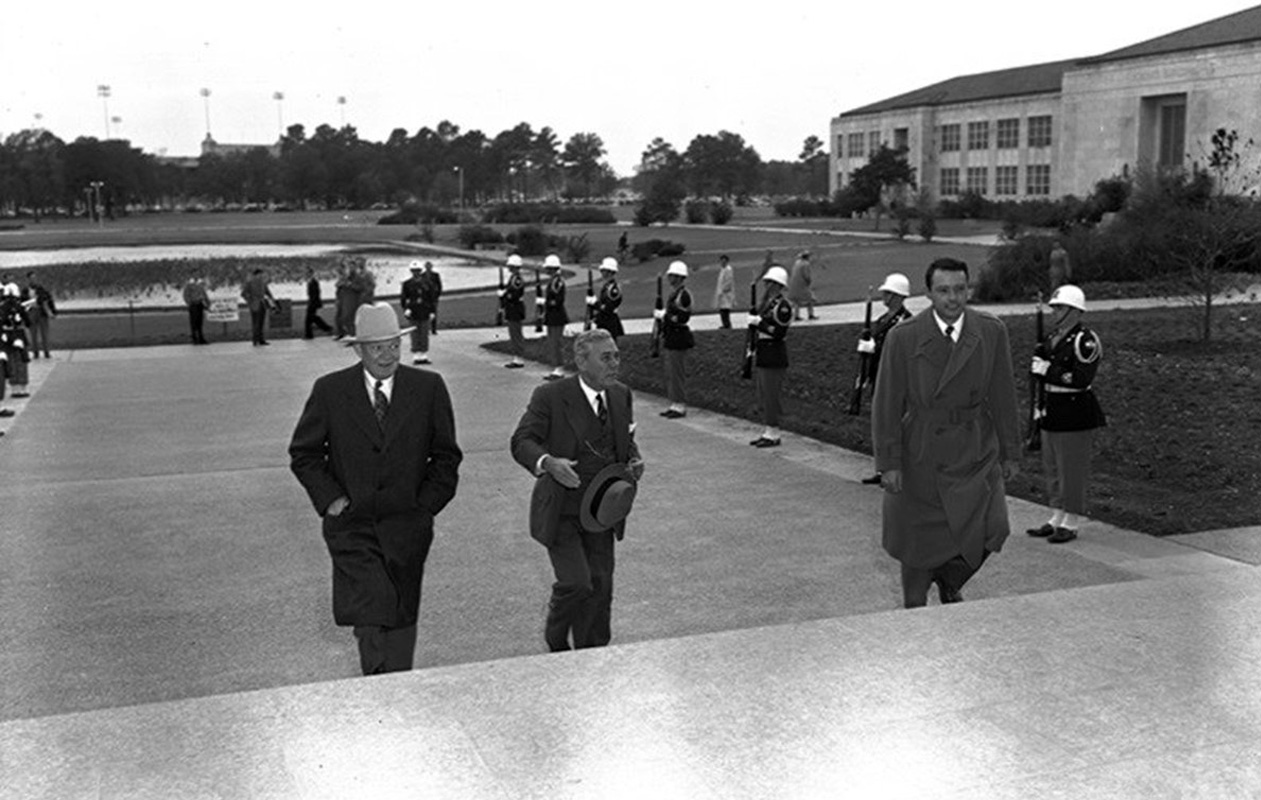 President Eisenhower walking up the steps of E Cullen with the Cullen Rifles behind
him
President Eisenhower walking up the steps of E Cullen with the Cullen Rifles behind
himShooting competition victories alone could not sustain the Cullen Rifles, however. With anti-war sentiment continuing to grow, there were more uniformed war protesters on campus than cadets. The Houston ROTC experienced a sharp decline in membership and popularity on campus. In a decade when veterans returning from Vietnam were spat on and called baby killers and child murderers, it was a bad time to be an American serviceman, much less a cadet on a Liberal college campus.
According to Taylor, who served in the U.S. Army during the Vietnam War years, few students were willing to be ridiculed and spat upon by their classmates for wanting to serve their country. As enrollment numbers dropped, the Cullen Rifles found themselves “pressed to function with less than about thirty” cadets, and as an extracurricular activity, they took a back seat to the Army’s main mission of developing officers to lead troops into combat.
Existing documentation, or rather the disheartening lack thereof, seems to further confirm that the final death knell of the Rifles was the decline of ROTC because of anti-war sentiments. Beginning in 1972, the Houstonian had very few references at all to the ROTC program, much less of the Rifles who, with their precision marching and rifle marksmanship, must have epitomized the goose-stepping imperialism that anti-war student protestors now associated with their country. The blackout from the Houstonian ended in 1975, the same year that the Vietnam War ended. Houston ROTC annual field training briefly returned to the campus spotlight in the 1975 Houstonian. Not until 1983 did ROTC begin to fully rebound from “years of negative sentiments” and by then, the damage had already been done.
In the years between ROTC’s sudden disappearance from campus life and its equally sudden resurgence, no mention of the Cullen or Cougar Rifles as a marching, drilling, or shooting team exists. The Rifles became a casualty of the Vietnam War, and like many of those casualties, the exact date of death is difficult to discern. It appeared that the Rifles were gone for good, but appearances can be deceiving.
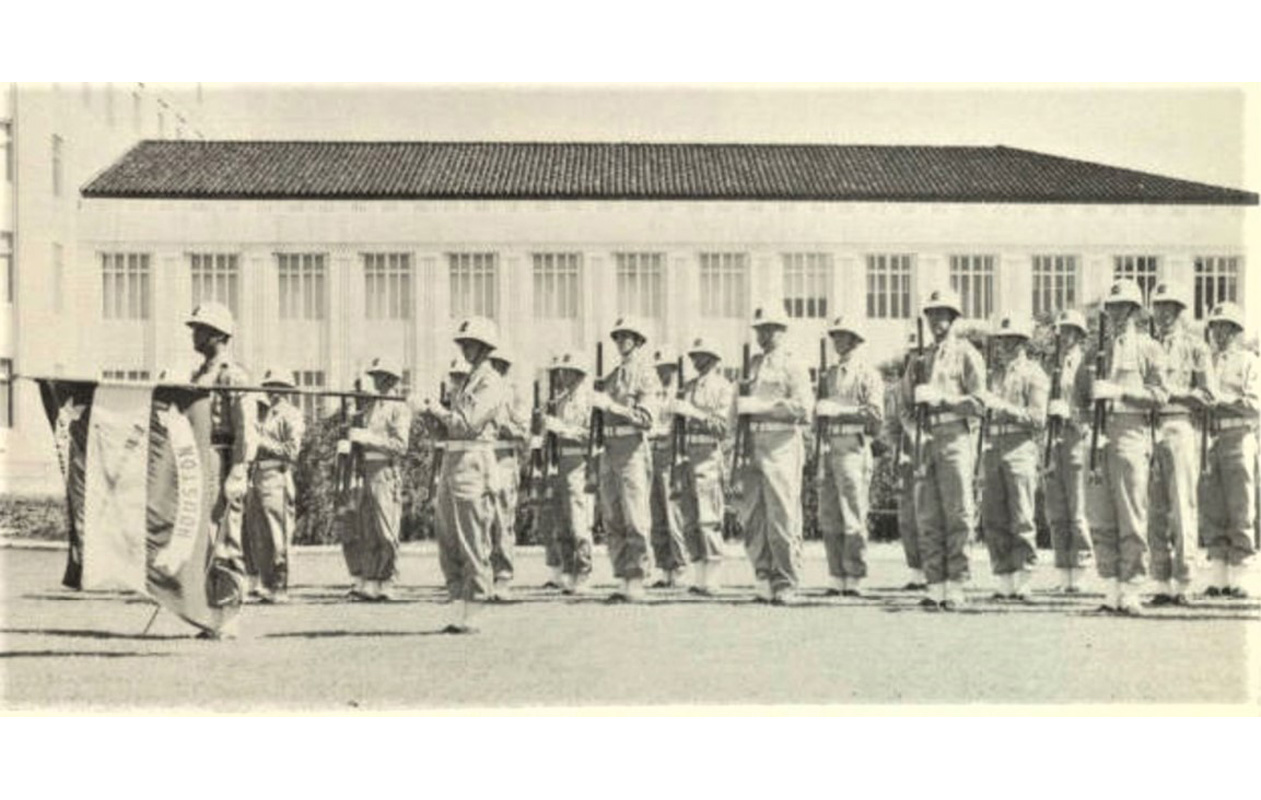 1950-51
1950-51Donations from Lillie Robertson, granddaughter of Hugh Roy Cullen, made it possible to re-establish the Cullen Rifles on September 17, 2013. These donations included fourteen new M4 rifles, a gift befitting the modern warrior. The revival became part of “a new expansion phase for the UH Battalion” as the ROTC sought to return to its earlier numbers and strength. According to then-Battalion Commander Lieutenant Colonel Michael Smith, the new Rifles were intended to serve as a “key recruiting and retention tool” for the battalion, and as another front for the university to compete with other schools in the NCAA. However, an unexpected government shutdown in October 2013, Lieutenant Colonel Smith’s retirement, other personnel changes, and administrative difficulties left the Rifles at risk of disappearing into the realm of forgotten history again.
In the fall of 2015, the Rifles’s rebirth began when the ROTC program, now led by Lieutenant Colonel Neil Chaffee, reorganized the Cullen Rifles into a sub-organization within the program. The most athletic, tactically knowledgeable, and academically skilled cadets were hand-selected to join this new generation of Rifles who were no longer simply drill and ceremony professionals or expert marksmen.
Today, U.S. Army Cadet Command has held Ranger Challenge, a national competition among ROTC programs that is regarded among cadets as the “varsity sport” of ROTC. Named after the U.S. Army Rangers special operations unit, annual competitions are held within each local brigade. They subject cadets to a rigorous thirty-six-hour gauntlet of events such as a ten-kilometer ruck march, nighttime land navigation, and combat skill proficiency tests. With their return, the Cullen Rifles took the reins as the premier competitive team for Houston ROTC.
The ROTC cadets themselves, said Chaffee, chose to resurrect the Cullen Rifles by taking the Houston Battalion Army ROTC Ranger Challenge team, which was already a highly successful team on its own, and transforming it into the Rifles to “[preserve] the legacy of the Cullen Rifles while modernizing the role, function and charter for the team.” This modernized the exhibition marksmanship and drill team iterations of the Rifles of yesteryear into the hard-hitting, fast thinking warrior leaders the Army needs today. This fundamental shift changed how the Rifles trained and the challenges they faced.
Today’s Rifles may look and train differently than their predecessors, but the spirit
remains. Now, the Cullen Rifles are preparing to send off a new generation of senior
cadets into the Army as officers and welcome a new generation of Rifles into the fold
as spring graduations and commissioning approach. From the atmospheric highs of the
1950s to pitch-black obscurity in the 1970s, today’s chapter of the Rifles ends with
a high note. While the past proves that nothing is certain, it is with great hope
that the Rifles’ mission and its creed are carried onwards with them.
Articles
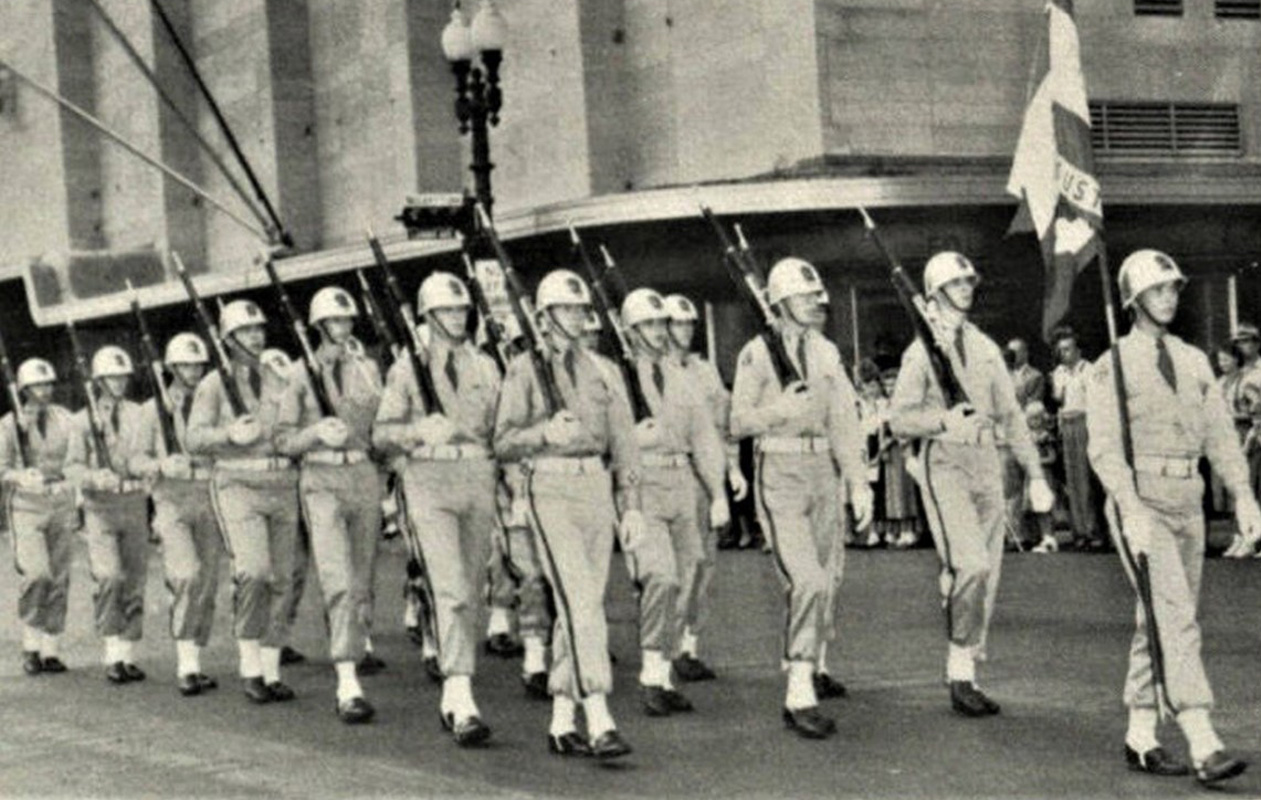 1951-52
1951-52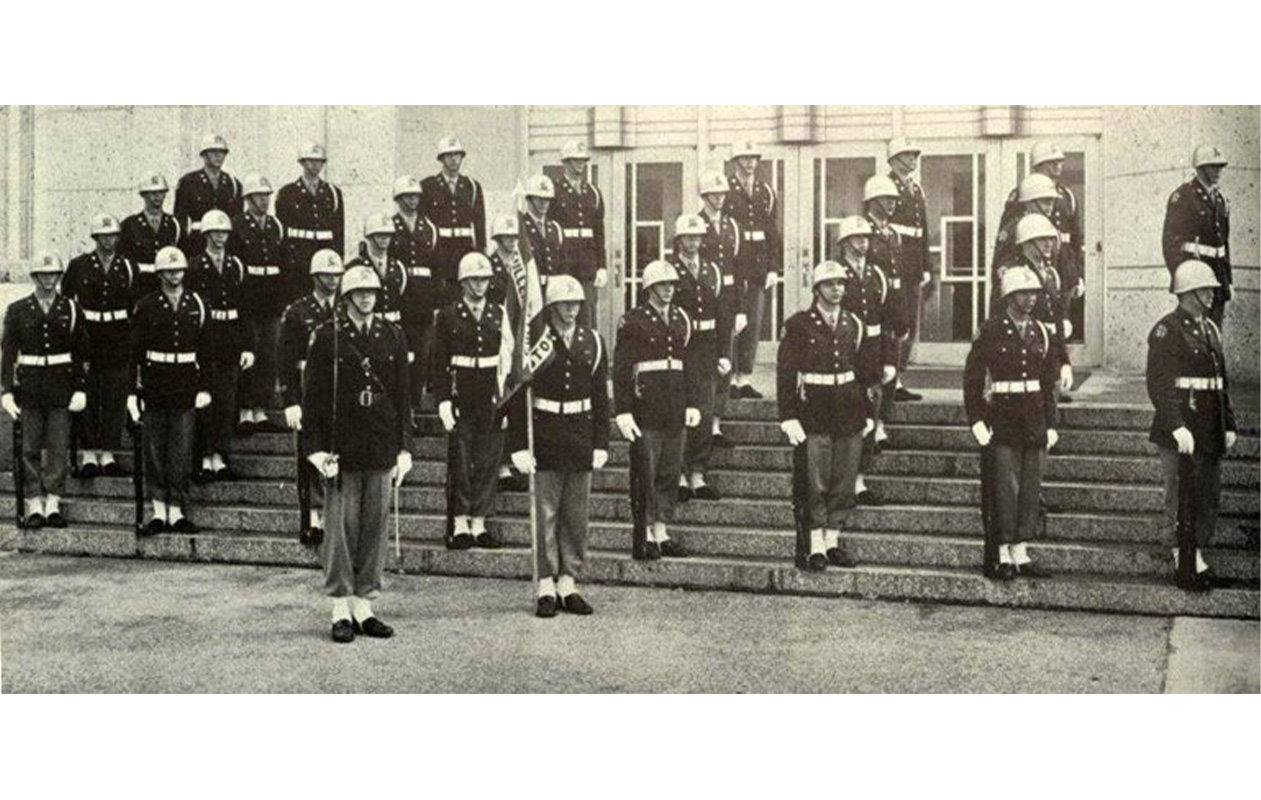 1954-55
1954-55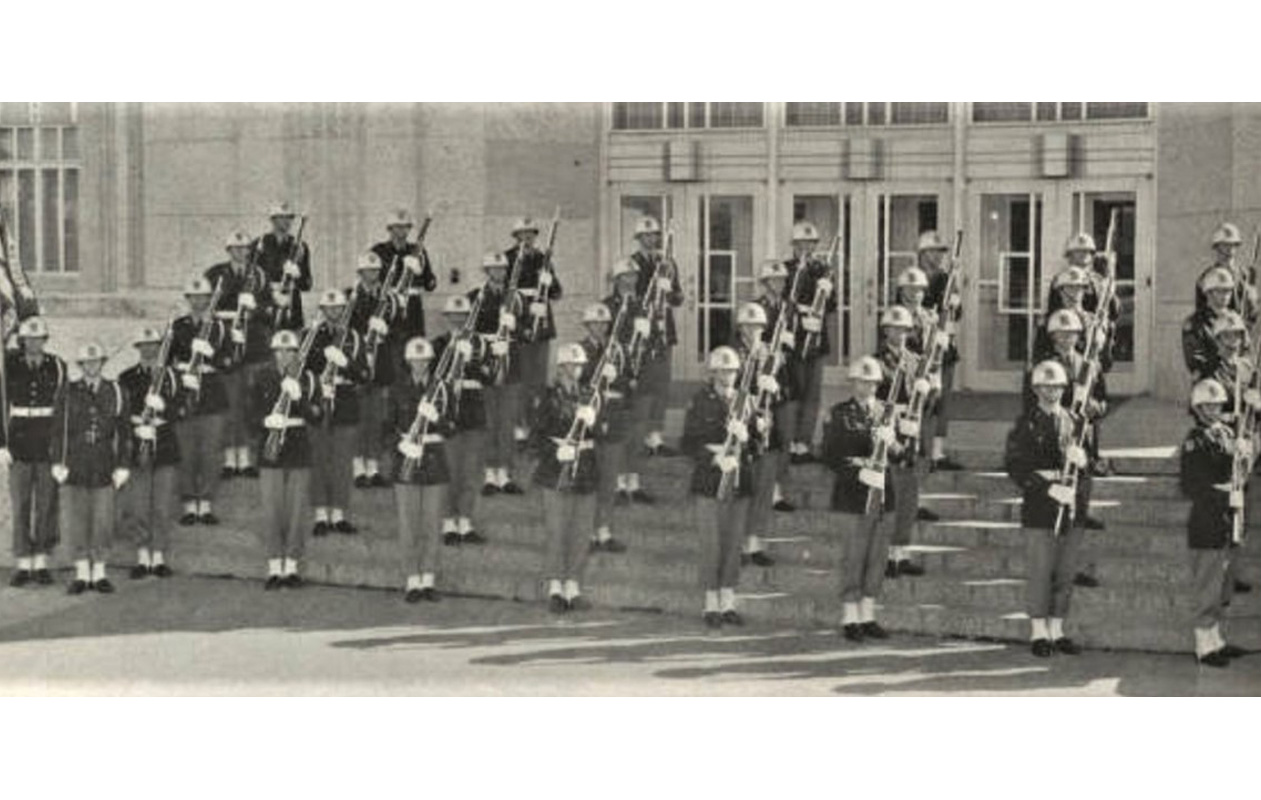 1955-56
1955-56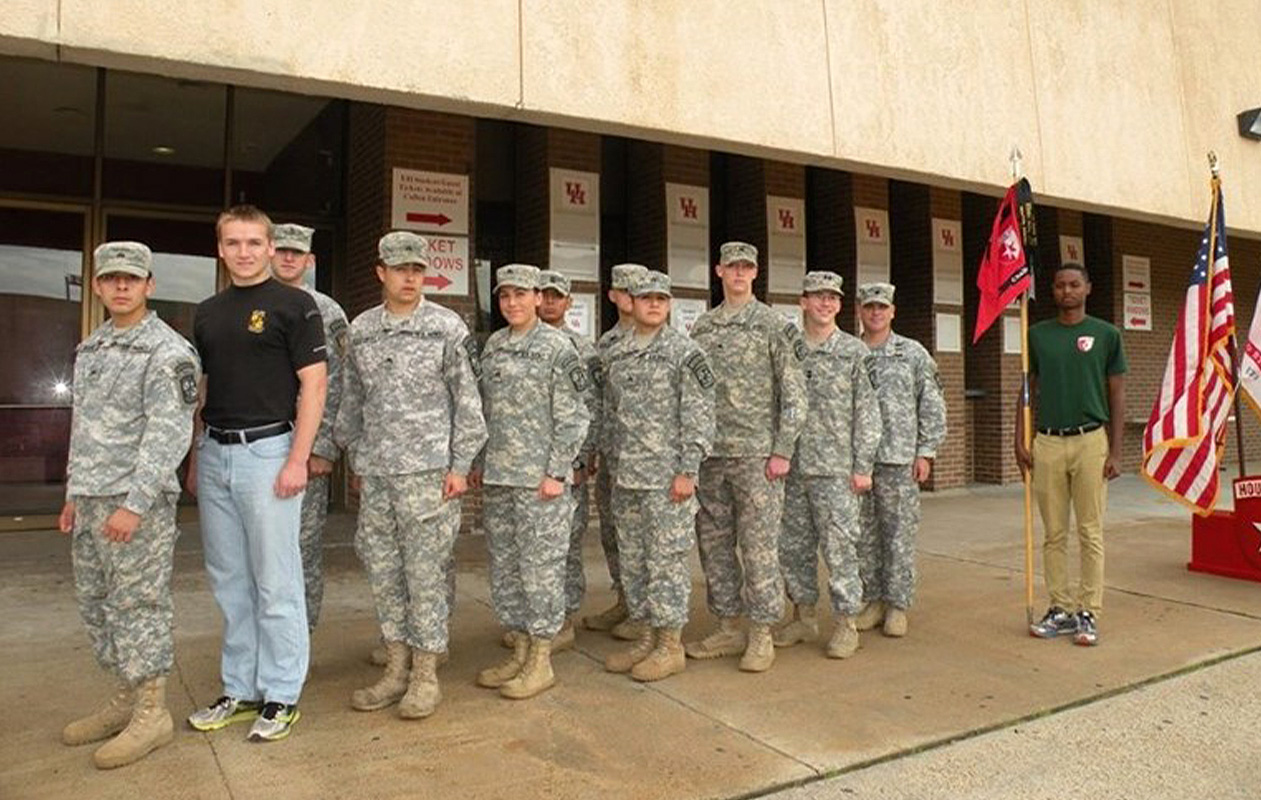 The Cullen Rifles reborn – 2016
The Cullen Rifles reborn – 2016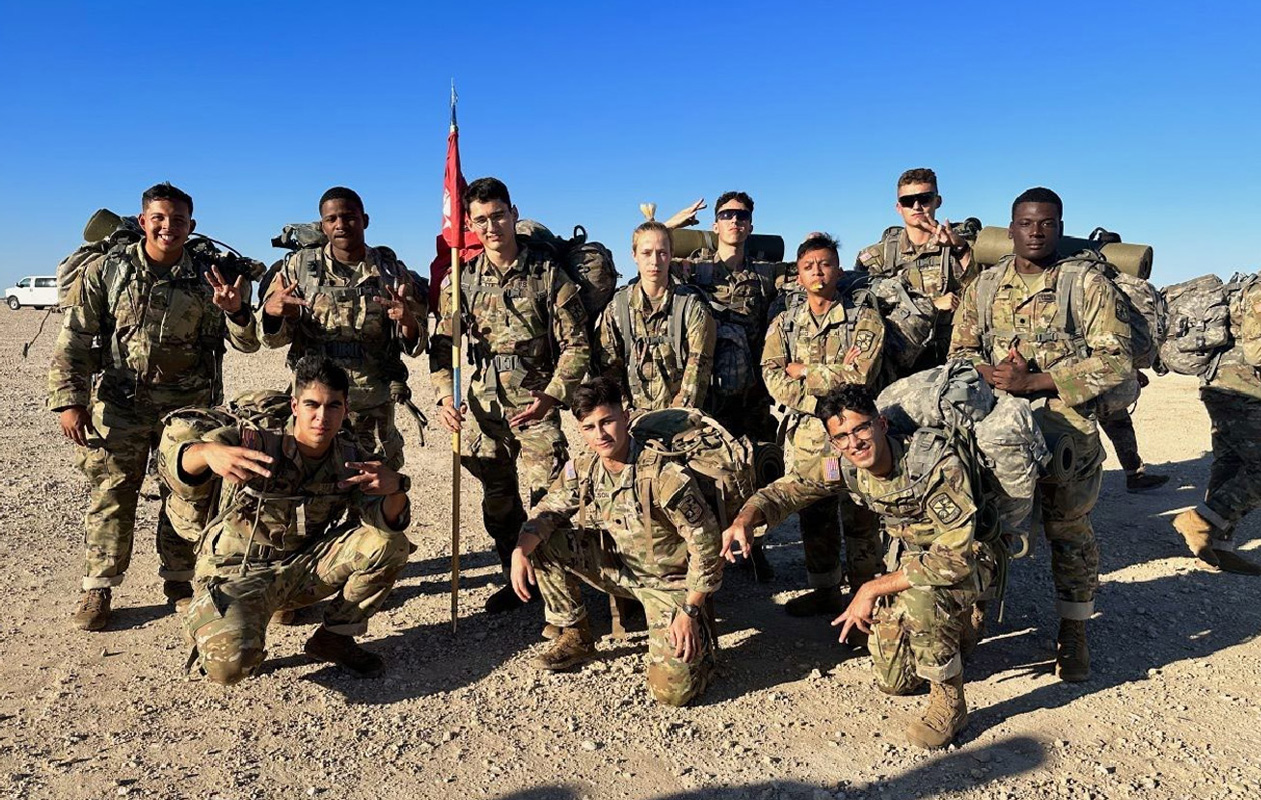 Photo of current Ranger Challenge Team
Photo of current Ranger Challenge Team